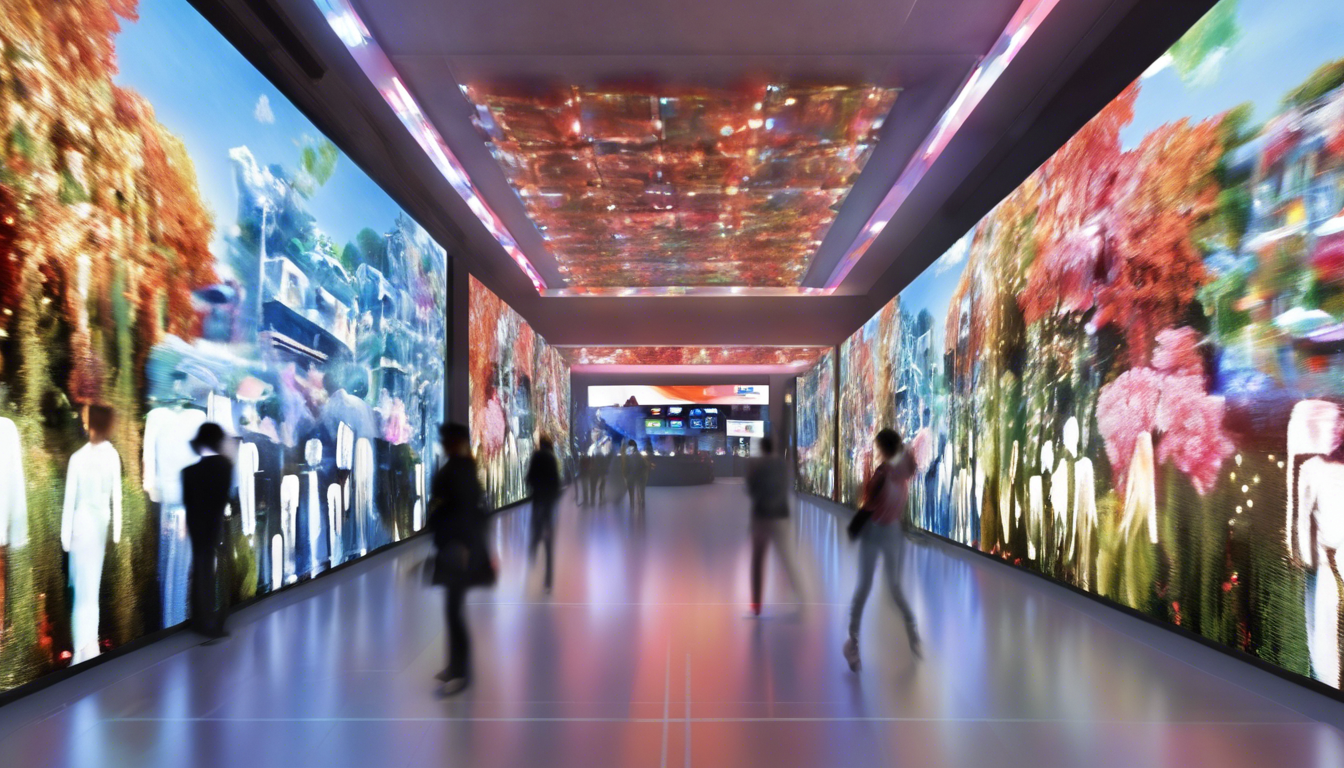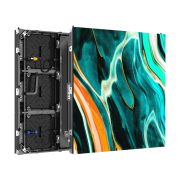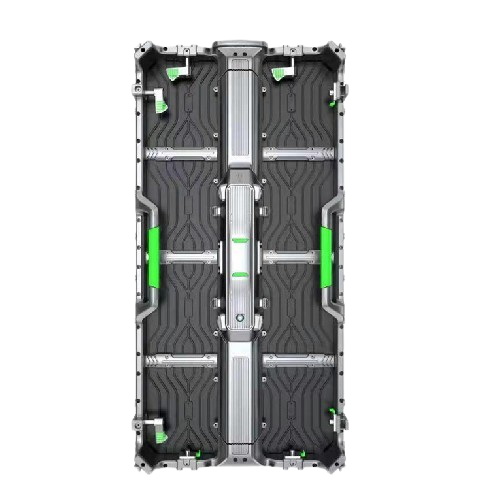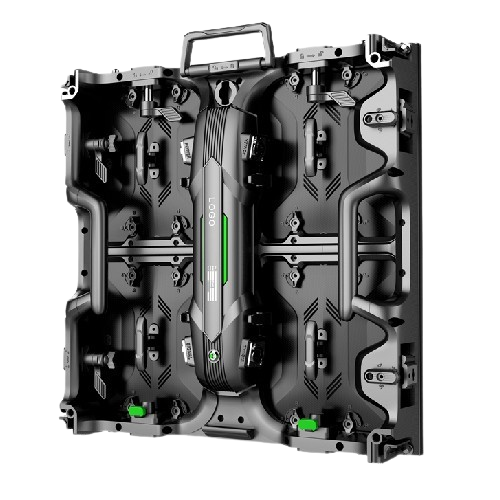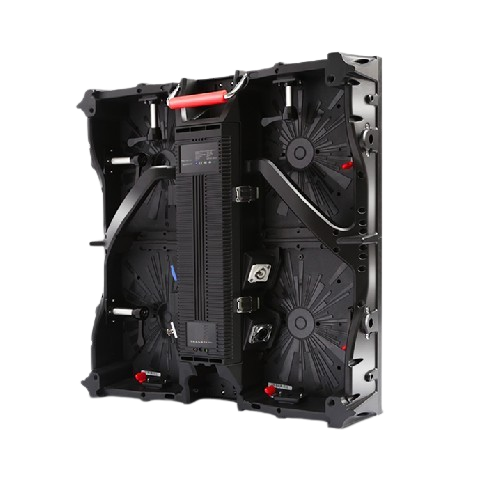Mastering Electronic LED Display Manufacture: A Comprehensive Guide
Understanding Electronic LED Displays
Electronic LED displays have become ubiquitous, from billboards to smartphones. These high-quality digital screens leverage light-emitting diodes to produce vibrant images and text. These displays offer several advantages over traditional display technologies, including lower power consumption, longer lifespan, and higher brightness.
The Importance of LED Technology
LED technology has revolutionized the display industry. Its benefits are widely recognized:
- Energy Efficiency: LED displays consume less power than traditional lighting solutions, making them cost-effective and eco-friendly.
- Durability: LEDs have a longer operational life, reducing maintenance costs and downtime.
- Brightness: LEDs provide higher brightness levels, improving visibility in various lighting conditions.
- Flexibility: LED displays can be designed for a range of applications, from small consumer devices to large-scale advertising boards.
The Manufacturing Process of LED Displays
The manufacture of electronic LED displays involves several critical steps, each requiring precision and advanced technological expertise.
1. Substrate Preparation
The process begins with the preparation of the substrate, often made from materials like single-crystal silicon, glass, or plastic. The substrate serves as the foundation upon which all other components are built.
2. Epitaxial Growth
During epitaxial growth, a thin layer of semiconductor material is deposited onto the substrate. This layer is critical as it determines the performance characteristics of the LEDs, such as efficiency and wavelength.
3. Photolithography
Photolithography is used to define the patterns of the LED components on the semiconductor wafer. This involves using light to transfer a geometric pattern from a photomask to a light-sensitive chemical photoresist on the substrate.
4. Etching
Etching removes excess material from the wafer, leaving behind the desired patterns. There are two types of etching: dry etching, which uses plasma gases, and wet etching, which uses chemical solutions.
5. Metallization
Metallization involves depositing metal onto the wafer to form electrical contacts. Materials like aluminum, gold, and copper are commonly used to ensure efficient electrical conductivity.
6. Assembly and Packaging
Once the LED chips are fabricated, they are assembled into the final display module. This involves attaching the LEDs to a printed circuit board (PCB) and encasing them in a protective package. The assembly process ensures the LEDs are securely positioned and electrically connected.
7. Testing and Quality Control
Each LED display undergoes rigorous testing to ensure it meets performance and quality standards. This includes tests for brightness, color accuracy, power consumption, and durability. Quality control is essential to ensure the final product delivers optimal performance and a long lifespan.
Types of Electronic LED Displays
Electronic LED displays come in various forms, each designed for specific applications:
1. Indoor LED Displays
Indoor LED displays are commonly used in retail stores, airports, conference rooms, and entertainment venues. They provide high-resolution images and are designed for close-up viewing.
2. Outdoor LED Displays
Outdoor LED displays are built to withstand harsh weather conditions and provide high visibility, even in direct sunlight. They are used for billboards, stadiums, and public information displays.
3. Flexible LED Displays
Flexible LED displays can be bent or curved to fit unique shapes and spaces. They are used in innovative advertising, architectural designs, and artistic installations.
[Note: Placeholder for the elementor template shortcode]
[Note: Placeholder for the elementor template shortcode]
Factors Affecting the Quality of LED Displays
Several factors influence the quality and performance of electronic LED displays:
- Pixel Pitch: The distance between the centers of two adjacent pixels. A smaller pixel pitch results in higher resolution and sharper images.
- Brightness: Measured in nits, brightness determines how well the display can be viewed in different lighting conditions. Higher brightness is crucial for outdoor displays.
- Refresh Rate: The number of times the display updates per second. A higher refresh rate ensures smoother motion and reduces flickering.
- Viewing Angle: The maximum angle at which the display can be viewed clearly. A wider viewing angle is essential for large-format displays and ensures consistent image quality from different perspectives.
- Color Accuracy: The display’s ability to reproduce colors accurately. High color accuracy is critical for applications where visual fidelity is paramount, such as digital signage and professional displays.
Innovations in LED Display Technology
The LED display industry is continuously evolving, driven by technological advancements and market demands:
1. MicroLED
MicroLED technology uses microscopic LEDs to create high-resolution displays with superior brightness and energy efficiency. This technology is gaining traction in the consumer electronics market, particularly for wearable devices and TVs.
2. Quantum Dot LED (QLED)
QLED displays incorporate quantum dots to enhance color accuracy and brightness. They offer vibrant colors and improved energy efficiency, making them popular for premium televisions and monitors.
3. Transparent LED Displays
Transparent LED displays allow viewers to see content on the screen while also seeing through it. This technology is ideal for retail displays, building facades, and augmented reality applications.
Challenges in LED Display Manufacture
Despite the numerous benefits, manufacturing electronic LED displays presents several challenges:
- Cost: High-quality LED materials and intricate manufacturing processes can be expensive, affecting the overall cost of the displays.
- Heat Dissipation: LEDs generate heat during operation. Efficient heat dissipation mechanisms are crucial to prevent overheating and prolong the lifespan of the display.
- Miniaturization: As displays become smaller and more lightweight, manufacturers face challenges in maintaining performance and durability.
- Supply Chain: The availability of raw materials and components can impact production timelines and costs. Ensuring a reliable supply chain is essential for uninterrupted manufacturing.
Future Trends in LED Display Manufacture
The future of LED display technology is promising, with several trends expected to shape the industry:
1. Advanced Materials
New materials, such as graphene and advanced semiconductors, are being explored to enhance the performance and efficiency of LEDs. These materials offer improved electrical conductivity and heat dissipation properties.
2. Smart Integration
Integrating LEDs with smart technologies, such as IoT and AI, will enable advanced functionalities. Smart LED displays can adapt to changing conditions, provide real-time data, and offer interactive experiences.
3. Sustainable Practices
Sustainability is becoming a key focus in LED display manufacture. Manufacturers are adopting eco-friendly materials, energy-efficient processes, and recycling initiatives to reduce their environmental impact.
[Note: Placeholder for the elementor template shortcode]
[Note: Placeholder for the elementor template shortcode]

